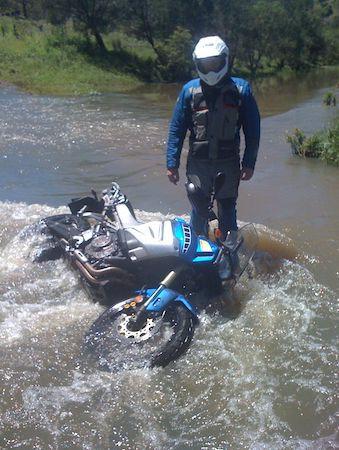Water Crossings – Navigate Them Right

Whether you're riding a small Dual Sports motorcycle or a large Adventure Bike, riding through water can be a lot of fun – but if not done properly can cause damage, even drown your bike.
Here are a few principles to keep in mind when you're faced with that next river or creek.
1. Decide If It's Crossable
Caution is the best approach when coming to a deep river. Firstly, make sure there's a trail on the other side – that'll let you know if others have made it. If the river is deeper than your knee, fast flowing and has an unpredictable bottom, it’s always best to avoid it if you can. It doesn't matter if you're using a KTM Adventure R, if you think it's too deep, it probably is.
2. Choose A Line
Wade in yourself or use a long sturdy stick as it's the only way to know how deep it is. Then, choose an imaginary line to cross, looking for small rocks and debris for a smooth path. Deep water flows smooth, while broken water is shallow but rockier. If fast flowing, start upstream and work diagonally downstream. Take into account that a heavier bike like the BMW R1200 GS will be harder to handle in a crossing.
3. Pick The Right Speed
Keep your thumb ready to flip the kill switch so you can shut the motor if your bike starts tipping. Start in first gear, enter the water fast enough to keep momentum but slow enough to not splash big, obscuring your vision. Standing up improves your chances at absorbing obstacles and gives you a better view. If you are not a confident stand-up rider (maybe you're on a big Yamaha Super Tenere) then choose a seated position but ready to use your feet in the water to maintain balance.
4. Maintain Forward Progress
Use your clutch to maintain smooth forward progress throughout the water crossing and avoid wheelspin at all times. Always focus on the river exit while using your peripheral vision to scan the path directly in front. You want to create a small bow wave in front of the bike, which will help reduce the height of the water a few inches around the bike. If seated, you should use your feet to paddle and maintain balance.